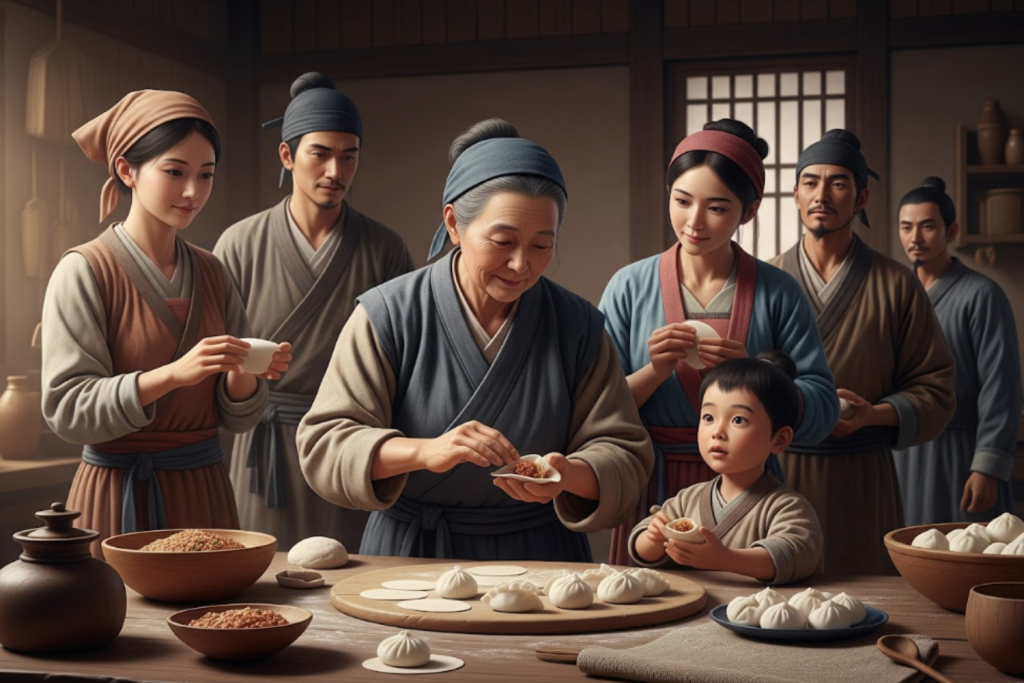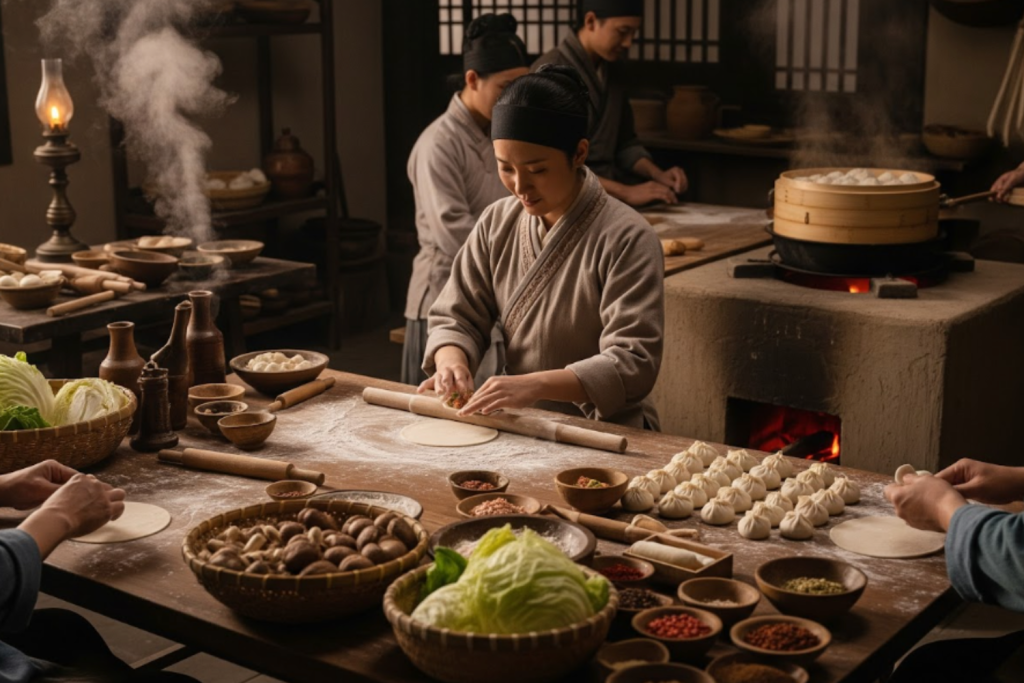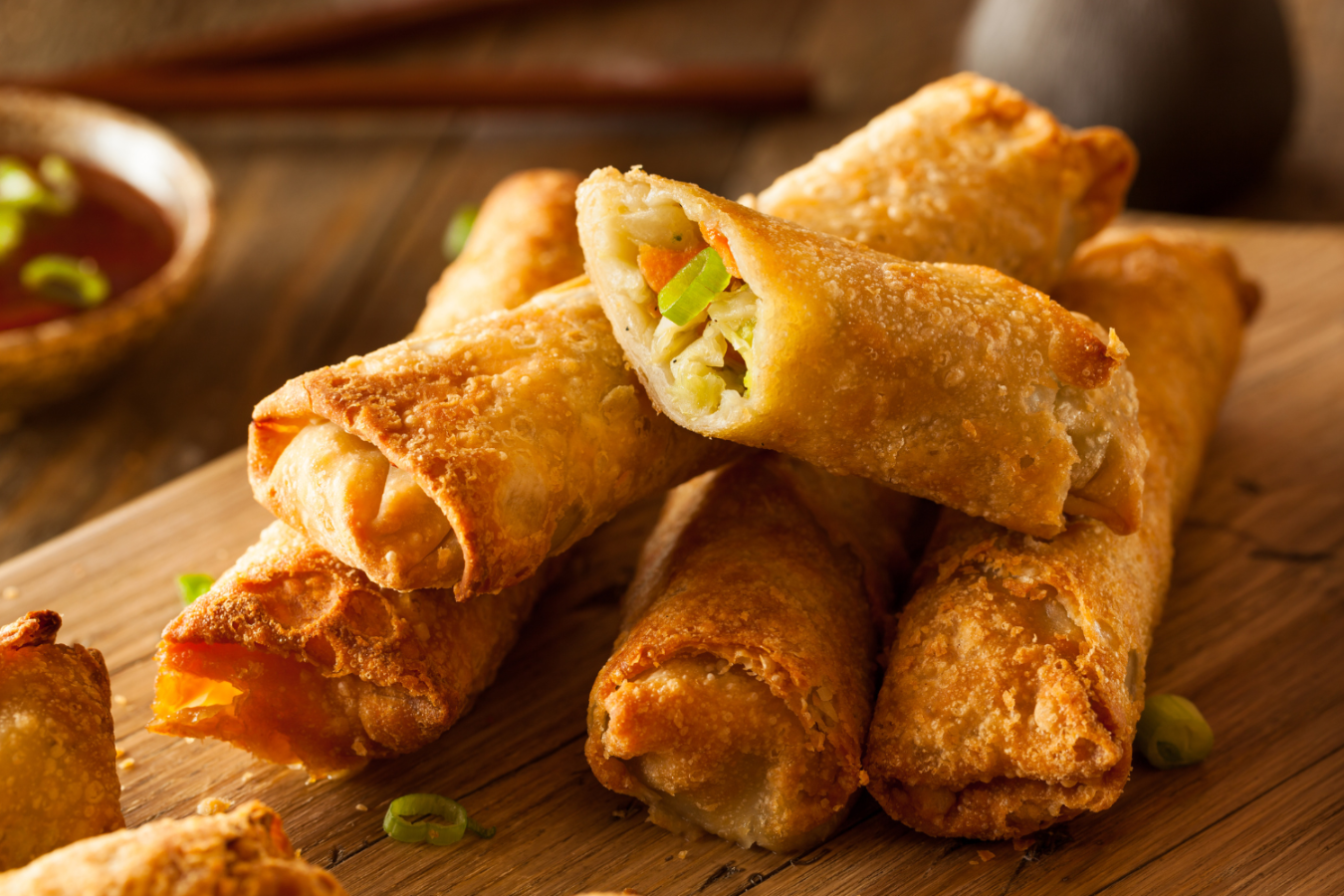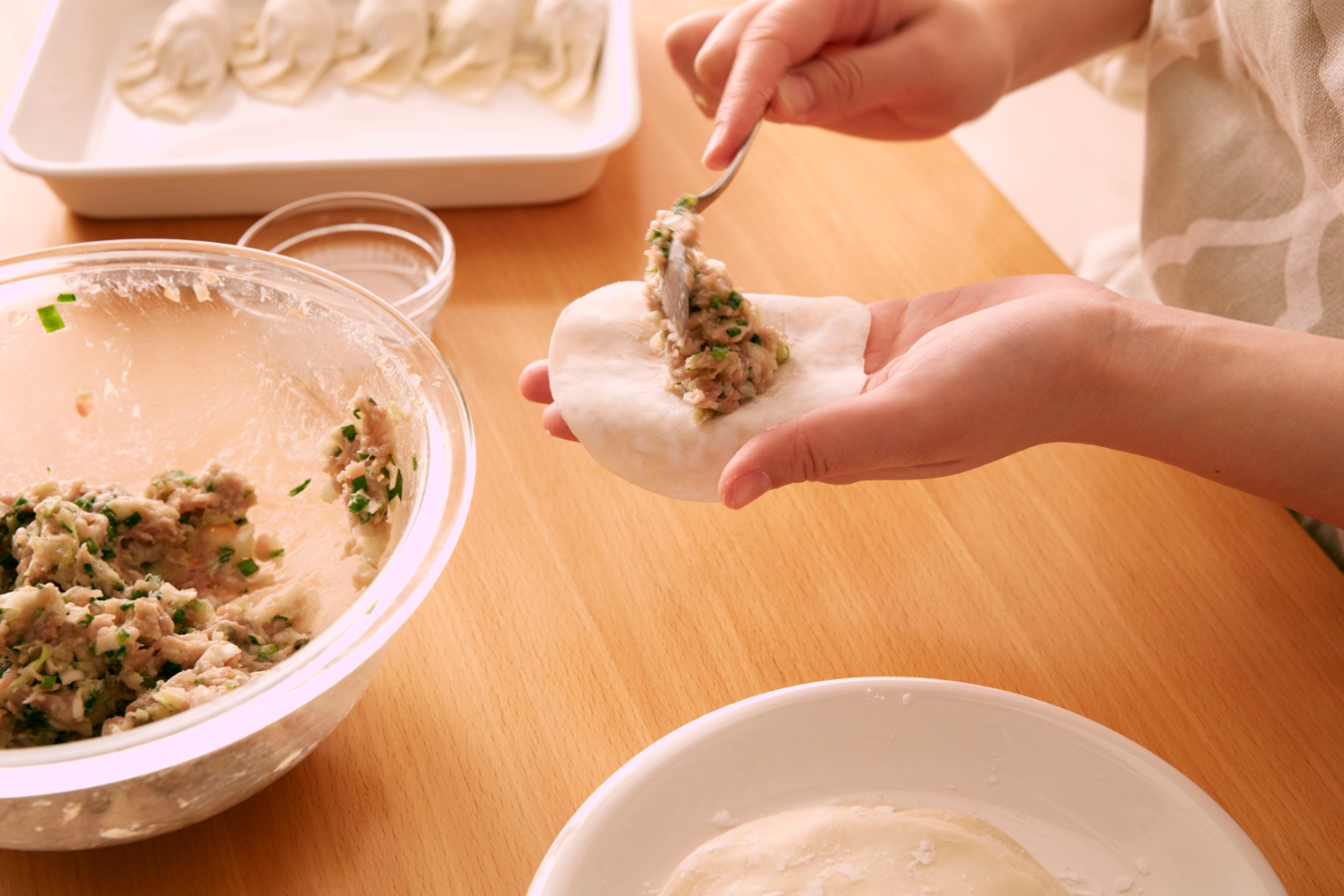Dive into the rich and fascinating dumpling history, a culinary journey that spans millennia and cultures. From its humble beginnings in ancient China to becoming a beloved dish enjoyed around the world, the origin of dumplings is a tale steeped in tradition, innovation, and deliciousness. Twin Dragon wrappers are proud to celebrate this enduring legacy, empowering you to create your own chapter in the magnificent dumpling history. Understanding the dumpling history is not just about tracing a food item; it’s about exploring the cultural narratives, ingenious culinary techniques, and shared human experiences that have shaped this iconic dish.
Unearthing the Ancient Roots: The Dumpling History in China
The true origin of dumplings is largely attributed to ancient China, with compelling evidence suggesting their existence over 1,800 years ago. This makes Chinese cuisine the foundational pillar of global dumpling history. Legend credits Zhang Zhongjing, a revered physician from the Eastern Han Dynasty (25-220 AD), with creating the first “jiaozi” to help his fellow villagers combat frostbite during a harsh winter. He would meticulously wrap medicinal herbs and mutton in dough, boil them, and serve them, calling them “jiao’er” (tender ears) because of their distinctive shape. This compassionate act marked the beginning of a culinary revolution, laying the groundwork for the diverse dumpling history we know today.
Zhang Zhongjing’s innovation was more than just a remedy; it was a testament to the resourcefulness and care embedded within early Chinese society. The concept of enclosing ingredients within a dough wrapper proved to be incredibly versatile and adaptable, a key factor in the long and varied dumpling history. As time progressed, these “jiao’er” evolved, transforming from a medicinal remedy to a staple food and an integral part of Chinese dumpling traditions. This evolution highlights a significant turning point in dumpling history, moving from functional sustenance to celebratory fare.
The Evolution of Dumplings: A Deeper Look into Dumpling History Across Dynasties
The journey of dumplings through China’s dynasties is a fascinating chapter in dumpling history. During the Tang Dynasty (618-907 AD), records indicate that dumplings became increasingly popular, extending beyond the common folk to the imperial courts. They were often served at banquets and special occasions, showcasing a growing sophistication in preparation and presentation. This period saw the diversification of fillings and cooking methods, further enriching dumpling history.
By the Song Dynasty (960-1279 AD), various types of dumplings, including both boiled and fried versions, were common. Cookbooks from this era detail different recipes and techniques, demonstrating the culinary artistry that had developed around dumplings. This era solidified the dumpling’s place in Chinese cuisine and its enduring legacy in dumplings. The Ming (1368-1644 AD) and Qing (1644-1912 AD) Dynasties continued this tradition, with dumplings becoming deeply ingrained in everyday life and festive celebrations, cementing their role in the ongoing narrative of dumplings. The regional variations also began to emerge more strongly during these periods, with different provinces developing their unique takes on this versatile dish, adding vibrant hues to the mosaic of dumpling history.

Chinese Dumpling History & Traditions and Their Profound Cultural Significance
Beyond their delicious taste, dumplings hold a profound cultural significance in China, a testament to their deep roots in dumpling history. They symbolize wealth and good fortune, particularly during the Lunar New Year. The distinctive shape of traditional Chinese dumplings resembles ancient gold and silver ingots, making them an auspicious food to consume as families welcome prosperity for the coming year. This symbolism is a powerful thread running through dumpling history.
During the Lunar New Year, dumplings are a centerpiece of the reunion dinner. Families gather to make and eat them together, a cherished activity that fosters togetherness and strengthens family bonds. This collective act of preparation is a beautiful aspect of dumpling history that continues to thrive today.
Different fillings also carry symbolic meanings, adding another layer of depth to dumpling history:
- Cabbage and Radish: These represent white gold and silver, signifying wealth.
- Fish: Symbolizes abundance and surplus, a wish for a prosperous year.
- Chives: Signify everlasting prosperity, a long and flourishing life.
- Shrimp: Represents happiness and good fortune.
- Ground Pork: A common filling that symbolizes strength and a bountiful harvest.
These symbolic meanings highlight the intricate relationship between food, culture, and the enduring narrative of dumpling history.
The Global Spread: How Dumplings Traveled the World
The influence of Chinese dumplings extends far beyond its borders, creating a global dumpling history. Through trade routes, migration, and cultural exchange, the concept of wrapping fillings in dough spread to various parts of the world, adapting to local ingredients and culinary preferences. This global diffusion is a testament to the inherent appeal and versatility of the dumpling.
- Japan’s Gyoza: While similar to Chinese jiaozi, Japanese gyoza often feature a thinner wrapper and are typically pan-fried to achieve a crispy bottom.
- Korean Mandu: Korean dumplings, or mandu, come in various shapes and sizes, often filled with kimchi, tofu, and meat. Their diverse forms add a rich dimension.
- Central Asian Manti: These steamed dumplings are found across Central Asia, Turkey, and the Caucasus, showcasing a different regional interpretation within dumpling history.
- Italian Ravioli and Tortellini: While distinct, the concept of filled pasta in Italy shares a fascinating parallel with the broader dumpling history, suggesting a common culinary thread.
- Polish Pierogi: These boiled or fried dumplings with various sweet or savory fillings are a staple in Eastern European cuisine, contributing significantly to dumpling history.
- Indian Samosas: Though often fried and with a different dough, samosas represent another form of filled pastry found in the vast landscape of dumpling history.
This global expansion demonstrates the universal appeal of the dumpling and how its history has been enriched by countless cultural interpretations. Each regional variation adds a unique chapter to the grand saga of dumpling history.
Modern Day Dumplings: A Continuing Dumpling History
Today, dumplings continue to evolve, with chefs and home cooks experimenting with new fillings, cooking methods, and fusion flavors. From vegan and gluten-free options to gourmet creations, the dumpling history is still being written, reflecting contemporary dietary trends and culinary innovation. The accessibility of ready-made wrappers, like those from Twin Dragon, makes it easier than ever for enthusiasts to participate in this ongoing dumpling history.
The enduring popularity of dumplings can be attributed to their versatility, comfort, and the communal experience they often represent. Whether enjoyed as a quick snack, a hearty meal, or a festive dish, dumplings hold a special place in the hearts and on the tables of people worldwide. This widespread appeal ensures that dumpling history will continue to be a vibrant and evolving story for generations to come.

Dumplings Around the World: A Global Culinary Phenomenon
While China is recognized for the origin of dumplings, this versatile food form has traveled far and wide, inspiring countless variations and becoming a beloved dish in cuisines across the globe. The concept of wrapping a savory filling in dough is universal, leading to a rich tapestry of dumplings around the world.
| Country/Region | Dumpling Type | Key Characteristics |
|---|---|---|
| Japan | Gyoza | Thinner wrapper, often pan-fried with a crispy bottom |
| Korea | Mandu | Various fillings, can be boiled, steamed, or pan-fried |
| Poland | Pierogi | Boiled, with sweet or savory fillings like potato and cheese |
| Italy | Ravioli/Tortellini | Pasta dough, typically filled with cheese or meat, served with sauce |
| India | Samosa | Fried pastry with savory fillings, often triangular |
| Nepal/Tibet | Momo | Steamed or fried, often with a spicy dipping sauce |
| Jewish Cuisine | Kreplach | Boiled, filled with meat or potato, served in soup |
This global embrace of dumplings highlights their adaptability and universal appeal. Whether it’s the delicate gyoza of Japan or the hearty pierogi of Poland, each variation adds another flavorful chapter to the ever-expanding dumpling history.
From Ancient Traditions to Your Modern Kitchen
Today, making dumplings is easier than ever, thanks to products like Twin Dragon wrappers. These high-quality wrappers allow you to bring the rich Chinese dumpling traditions into your own home, whether you’re celebrating Lunar New Year dumplings or simply enjoying a weeknight meal.
For those interested in exploring the full breadth of dumpling history, consider experimenting with different fillings and cooking methods. You can steam them for a healthy option, pan-fry them for a crispy texture, or boil them for a classic preparation.
Twin Dragon wrappers are your gateway to continuing this delicious dumpling history. Explore our recipes and bring the delightful origin of dumplings to life in your kitchen.
Frequently Asked Questions About Dumpling History
Q1: What is the earliest known evidence of dumpling history?
A1: The earliest known evidence of dumpling history dates back over 1,800 years to ancient China, during the Eastern Han Dynasty, with the creation of “jiaozi” attributed to physician Zhang Zhongjing.
Q2: How did the origin of dumplings evolve from a medicinal remedy?
A2: Initially, “jiaozi” were created with medicinal herbs and mutton to combat frostbite. Over time, as ingredients became more accessible and culinary techniques advanced, they transformed into a staple food and a celebratory dish, particularly during festivals, marking a significant evolution in dumpling history.
Q3: What is the cultural significance of dumplings in Chinese dumpling traditions?
A3: In Chinese culture, dumplings symbolize wealth and good fortune, especially during the Lunar New Year, due to their resemblance to ancient gold and silver ingots. Making and eating them together fosters family bonds, making it a cherished tradition deeply rooted in dumpling history.
Q4: How did dumpling history spread beyond China to other countries?
A4: Dumpling history spread globally through trade routes, migration, and cultural exchange. Countries like Japan (gyoza), Korea (mandu), and those in Central Asia (manti) adopted and adapted the concept, creating their unique versions, thereby enriching the global dumpling history.
Q5: Are there specific symbolic meanings associated with different dumpling fillings?
A5: Yes, in Chinese culture, various fillings carry symbolic meanings. For instance, cabbage and radish represent white gold and silver, fish signifies abundance, and chives symbolize everlasting prosperity, all contributing to the rich tapestry of dumpling history and tradition.
Q6: What makes Twin Dragon wrappers a great choice for exploring dumpling history in your kitchen?
A6: Twin Dragon wrappers offer convenience and quality, allowing you to easily create delicious homemade dumplings. They provide the perfect foundation for experimenting with different fillings and celebrating the rich dumpling history right in your own kitchen.
Q7: Where can I purchase Twin Dragon wrappers to start my own dumpling-making adventure?
A7: Ready to make your own delicious dumplings and become a part of the ongoing dumpling history? You can conveniently purchase Twin Dragon wrappers on Instacart! Simply click here to find a store near you and get started today!




